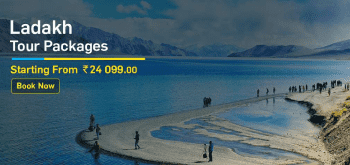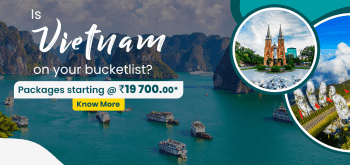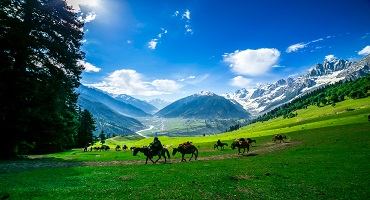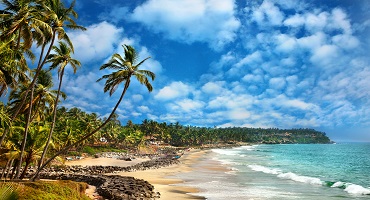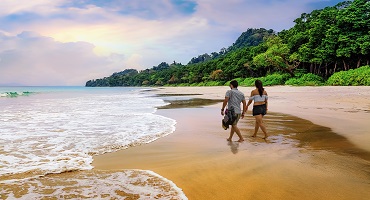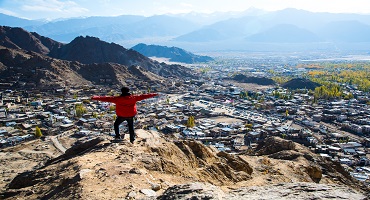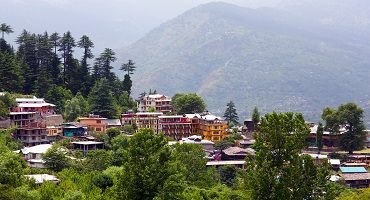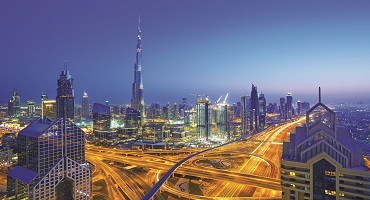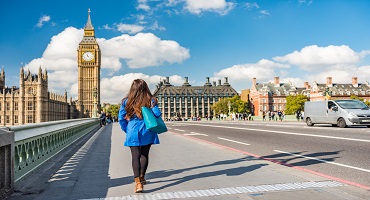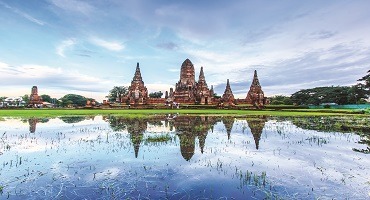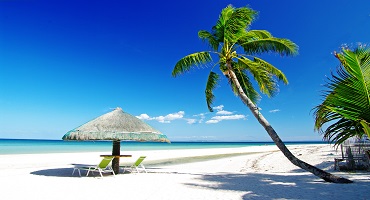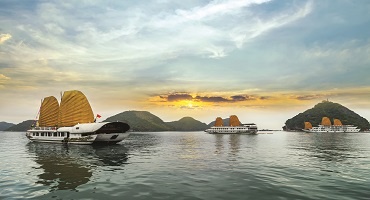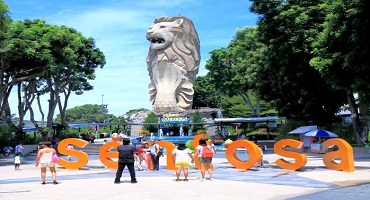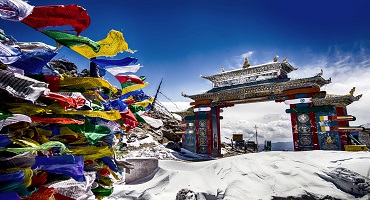The majestic heights of Ladakh
Ladakh, or La-dvags as it is known in Tibetan, is the ‘land of high passes’ and that has always been its biggest draw for tourists. A land known for its monasteries, its mountain peaks, its adventure and thrills, it calls out to the adrenaline seeker within us, and becomes a destination that deserves a pilgrimage of sorts at least once in a lifetime. Come summer or winter, Ladakh tourism is a magnet all year round. Give heed to its untouched beauty and fulfil your call to the pristine land with your visit to these majestic heights.
| Ladakh Tourism: A Quick View of the City |
| State |
Jammu and Kashmir |
| Official Language |
Hindi, English and Ladakhi (also called Bhoti or Bhodi) |
| Dial Code |
01982 |
| Population |
274,289 |
| Currency |
Indian Rupee (INR) |
| Time Zone |
GMT +5:30 (IST) |
| Area |
59,196 square kilometres |
Highlights: Monasteries and more
Places of worship
Buddhism is the most followed religion and the numerous monasteries stand testimony to that. The rugged terrain did nothing to stop the monks and nomads from traveling the landscape and building their dwellings that have stood the test of time. Among the world-renowned places to visit in Ladakh are Hemis Monastery, Karma Dupgyud, Matho Monastery, Rangdum Gompa, Lamayuru Monastery, Phyang Gompa, and the Likir Monastery.
Explore and shop
Once you have had your fill of spirituality, allow the bazaars to pull you in. The sheer range of artefacts and skills will leave you mesmerised. Explore Ladakh as you drift from stall to stall, talking to the owners and taking in the beauty of the myriad creations of the people of this land. If you are looking for a keepsake, perhaps we could interest you in a pashmina shawl or dress. Hand-woven caps, sweaters, gloves and carpets are also a big rage, with stunning colours and intricate designs all clamouring for attention. Silver and turquoise jewellery, Thangka paintings, prayer wheels and Buddhist masks are all excellent reminders to mark your time spent here.
Cuisine
Ladakh’s cuisine, while greatly influenced by Tibetan culture, still has a voice of its own. You must absolutely taste Thupka, a delicious noodle-soup made using boiled vegetables, chunks of chicken, pork, and meat. People here are friendly and when they invite you for a cup of tea, don’t refuse but also don’t expect a typical cup of steaming brew. Ladakh is famous for its butter tea – a pink coloured, fragranced liquid made from tea leaves, butter, salt and water. Quite unexpected, right? Momos might be popular in the rest of India today but they originated here, and you must sample them. Simple daily fare, these are made from flour and water, and come stuffed with minced meat, vegetables or cheese.
Nature
Wildlife enthusiasts are drawn to Ladakh as bees to honey. The land is home to many exotic species of flora and fauna. Adventure enthusiasts can trek along the steep slopes to catch a glimpse of the wildlife of the land. Adrenaline junkies can explore corners of the hitherto unexplored land that calls out to thrill-seeker and amateur explorers. Whether it’s trekking, mountaineering, white water rafting, motor biking, jeep safaris, camping or sports like archery and polo, Ladakh is adventure brought to life.
Festival
Ladakh is a land of festivals that includes traditional dancing, singing and an explosion of colourful masks. Buddhism has a say here and the visitor can see the strong influence that the religion brings into the many fairs and festivals that are celebrated by its people. Most Ladakhi festivals take place in winters, and the land is replete with various expressions of dance and dramas. The most famous festivals include the Losar festival, Hemis Tsechu festival, Sindhu Ladakh festival and Darshan festival. If you wish to see Ladakh enjoying itself in its splendour and complete abandonment, then planning a trip in winter is a great way to understand its rich and unique culture.
Interesting facts about Ladakh:
- Ladakh is the highest residential point in India and it is situated along the banks of the Indus River.
- It is also the least populated area in India.
- Despite being a dry place, Ladakh is home to more than 200 species of birds.
- It is home to the world’s highest optical, in-framed and Gamma ray telescopes.
- The twin-humped camel can only be found in India in Ladakh.
- Have you heard of Magnet Hill? This ‘gravity hill’ located near Leh creates such an optical illusion that the downhill road actually seems to look like it is going uphill. Objects, especially cars when left in neutral, appear to roll ‘uphill’, defying norms of gravity.
- The Khardung La Pass at 5,359 meters is the world’s highest motorable road.
Ladakh tourism helps bring out the best of the land showcasing its rugged and stark beauty to all those who visit these lands. Plan a sojourn here and fill your memories with Ladakh famous places and experiences.
Location: Rivers and roads meet mountains
Ladakh is a mountainous region in India that covers land from the Siachen Glacier in the majestic Karakoram Range to the main Great Himalayas further down to the south. The highest plateau in Jammu & Kashmir, it dates back nearly 45 million years back when the Indian plate collided with the Eurasia plate to form these ranges. The Indus River flowing through the ranges forms a backdrop for most historical and current towns that make up the inhabited parts of this region.
Click here to view Ladakh on Google Map
Timings: Best Time to Visit
There are those who swear by winters in Ladakh and then there are those who prefer summer. At the end of the day, it depends on your preferences – the region offers unprecedented beauty and thrilling experiences whenever you visit. While winters are harsh, the region brings to life adventures and exhilarating experiences that are one of a kind. Winter is also when there are fewer crowds, allowing you to enjoy the hills and valleys at your pace.
Undoubtedly, summer is when tourism is the best time to visit Ladakh as the city is buzzing with more activity. The district explodes with colours and warmth. You have more access to every corner and the beauty of the place is simply breathtaking.
Winter is from mid-October to March when the temperatures drop to sub-zero, and most hotels and sightseeing places are closed. Summer, or the peak tourist season, begins from April and goes on till July. You can also visit from mid-September to mid-October when the true beauty of Ladakh can be experienced.
How to get to Ladakh
Below are some of the ways how to get to Ladakh
By Road - Ladakh is at a distance of 434 km from Srinagar and 494 km from Manali, and it is quite convenient to hire a cab or a jeep from either of the two cities. You can also book a seat on a JKSRTC bus. If you are feeling adventurous, you can bike to Leh from Srinagar, Manali or Chandigarh. Winters might not be a good idea for this as the highways are shut due to heavy snowfalls. If you do have to take the road, May to September is the ideal time.
By Rail - You can take a train up to Jammu Tawi (700 km from Ladakh) from most of the major stations in India, such as Delhi, Kolkata or Mumbai. From there you can hire a cab or once again, board a JKSRTC bus to head further on.
By Air - Leh is the nearest airport and has good connectivity to Delhi, Jammu, Srinagar, Chandigarh and many other major cities in India. From Leh, you can book yourself a cab to any of the places that you are interested in visiting.
History: Coveted land, since time immemorial
The walls of caves in Ladakh tell stories from Neolothic times, when man first made an appearance on earth. Shift to many years later and the people here find a mention in India’s ancient scriptures, the Puranas. Such is the history of this land.
Ladakh enjoys proximity to Tibet and has always been predominantly Buddhist, later giving way to Islam after repeated Islamic invasion. Its physical proximity notwithstanding, it has held its distinct geographies and cultivated cultures and traditions that belong to this region alone. Despite the many rulers and invaders, this part of the country has always held its sovereignty and established itself as an independent kingdom.
Post-independence, with China and Pakistan both breathing heavily down the Indian subcontinent, the region today sees a heavy Indian army presence to keep a check on stand-offs and skirmishes along the border.
Do you ever fantasize sleeping on the grass, slowly drinking wine as you gently fall asleep counting the stars? Can you imagine being on a hilly terrain and traveling further to land in lots of snow? This dream doesn't end here; you go even further to fall on lush greenery. Can you form a picture of how amazing will it be to experience all these things on the same land? That is what Ladakh does to you. The word, “Ladakh”, is the Farsi translation of the Tibetan word, “La-dvags”, which literally means the land of Passes high.
It bewitches you with its beauty which is so hard to handle; you will melt like the snow. Blue waters that make you never want to look away, colorful Tibetan prayer flags, prayer bells, monasteries that will fascinate you with their architecture, lots and lots of beauty that you can't get enough of; and not to forget, the out-of-the-world starry nights. I wonder if pictures can ever do justice to how beautiful Ladakh looks. This place is going to take you on a spin of so many things at once, that you will not get over it anytime soon. It is just like alcohol, you drink some of it and want more as you keep gulping, and then you're suddenly out of your senses.
Tourism in Ladakh is one of the important sources of revenue for the state of Jammu and Kashmir. The towns of Leh and Kargil are the largest in Ladkah. A good 50 percent of the population of Ladakh is made up of Shia Muslims with Tibetan Buddhists coming a close second.
The Ladakhi heartland is located in the Indus Valley. The population here is higher compared to the other areas and the primary occupation is agriculture as the land here is very fertile. This region runs parallel to the Ladakh Mountain Range on the Northeast while the Shayak and Nubra Valleys are in the southwest. The Stok Valley is in the south and can be seen clearly from Leh while the popular trekking destination, the Markha Valley lies in the north. On the eastern side of Ladakh is the Changtang Plateau, home to many nomadic tribes and towards the West is a place called Kharnak.
Currency
Indian Rupee (Rs.) is the only currency accepted in Ladakh.
Cost and Money
The staying options in Ladakh are generally family owned and cheap. An accommodation in a budget hotel or homestay can cost you approximatelyRs. 400-Rs. 1000 for a single or double bedroom. There are some deluxe hotels too which can be opted for anywhere between Rs.1000-Rs. 4000 and luxury hotels at a priceaboveRs. 4000approximately.
It is advisable to carry a good amount of cash at all times as transactions here happen mostly in Cash and cards are not widely accepted. While you will find plenty of ATM’s in Ladakh’s main markets and on the Leh-Manali Highway, there are only a few of them in the other regions. Moreover, in the Nubra, Tso Moriri and Pangong regions, only cash is accepted.


